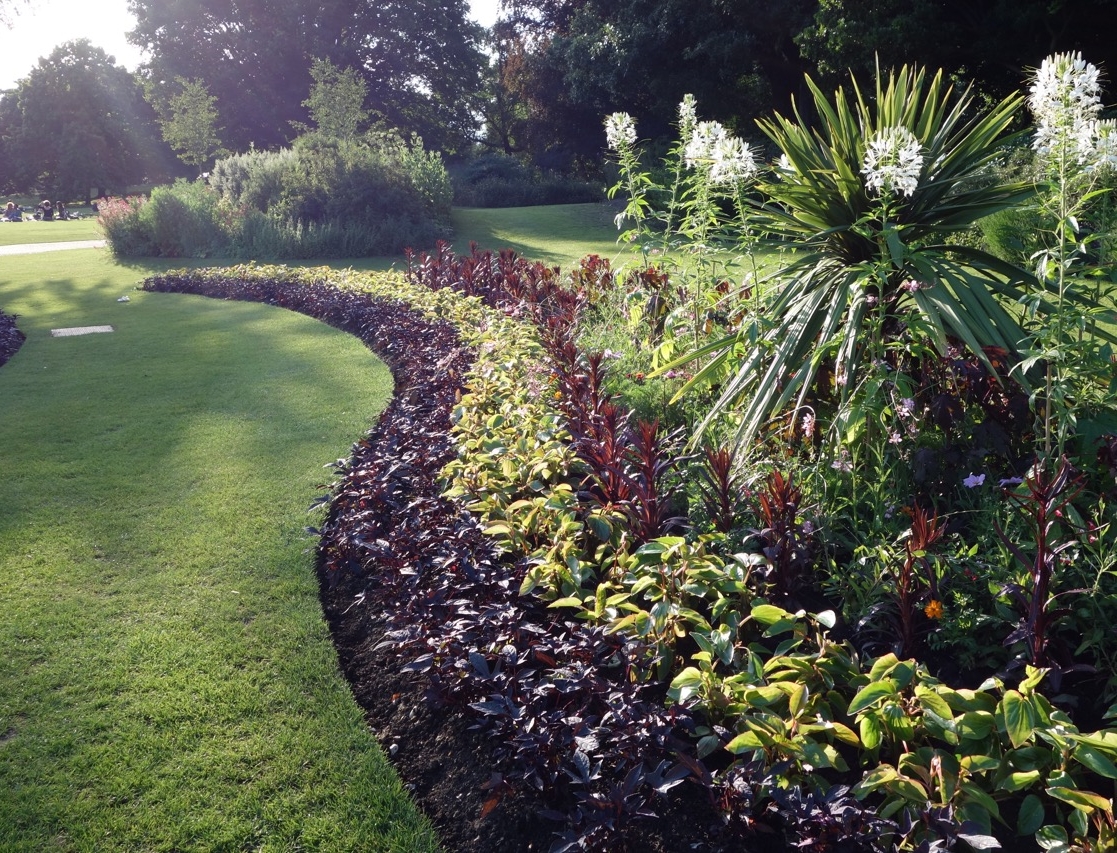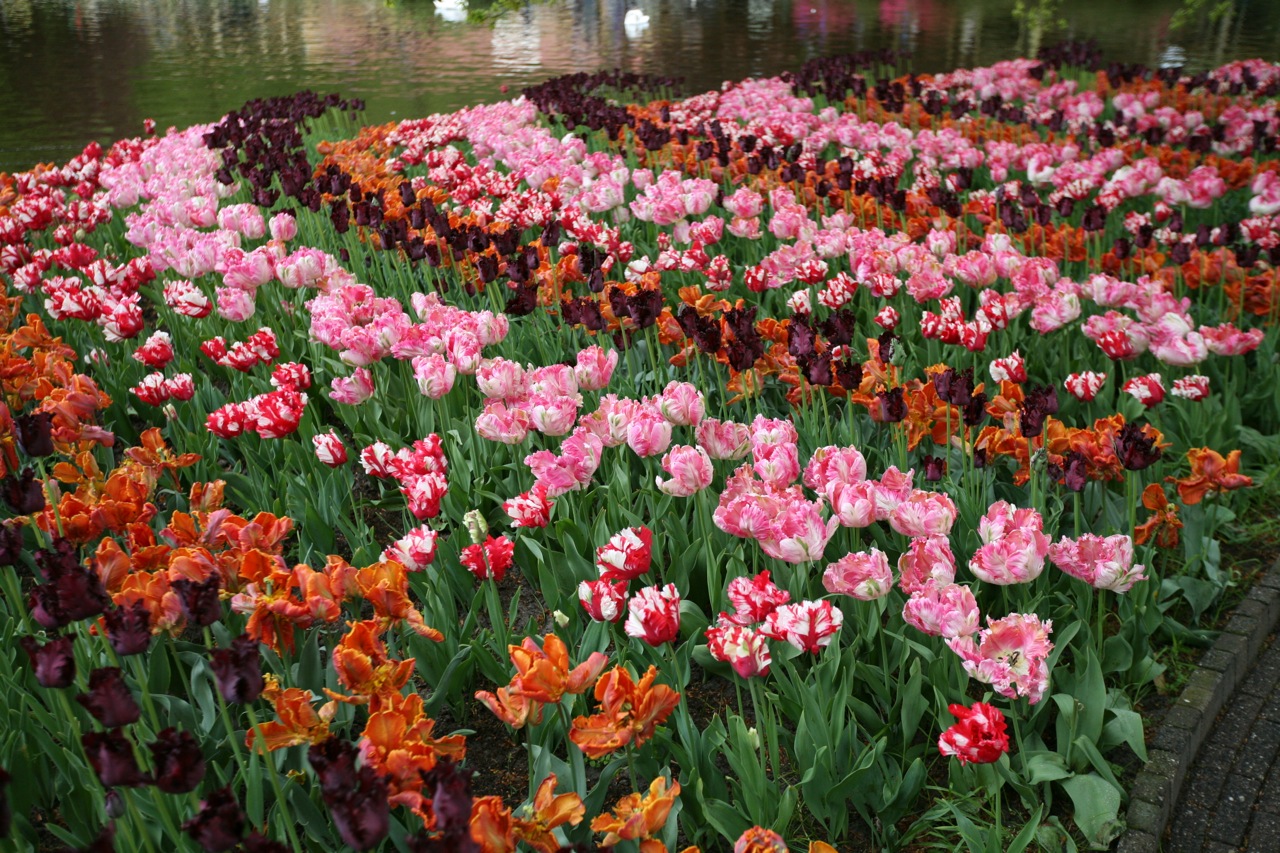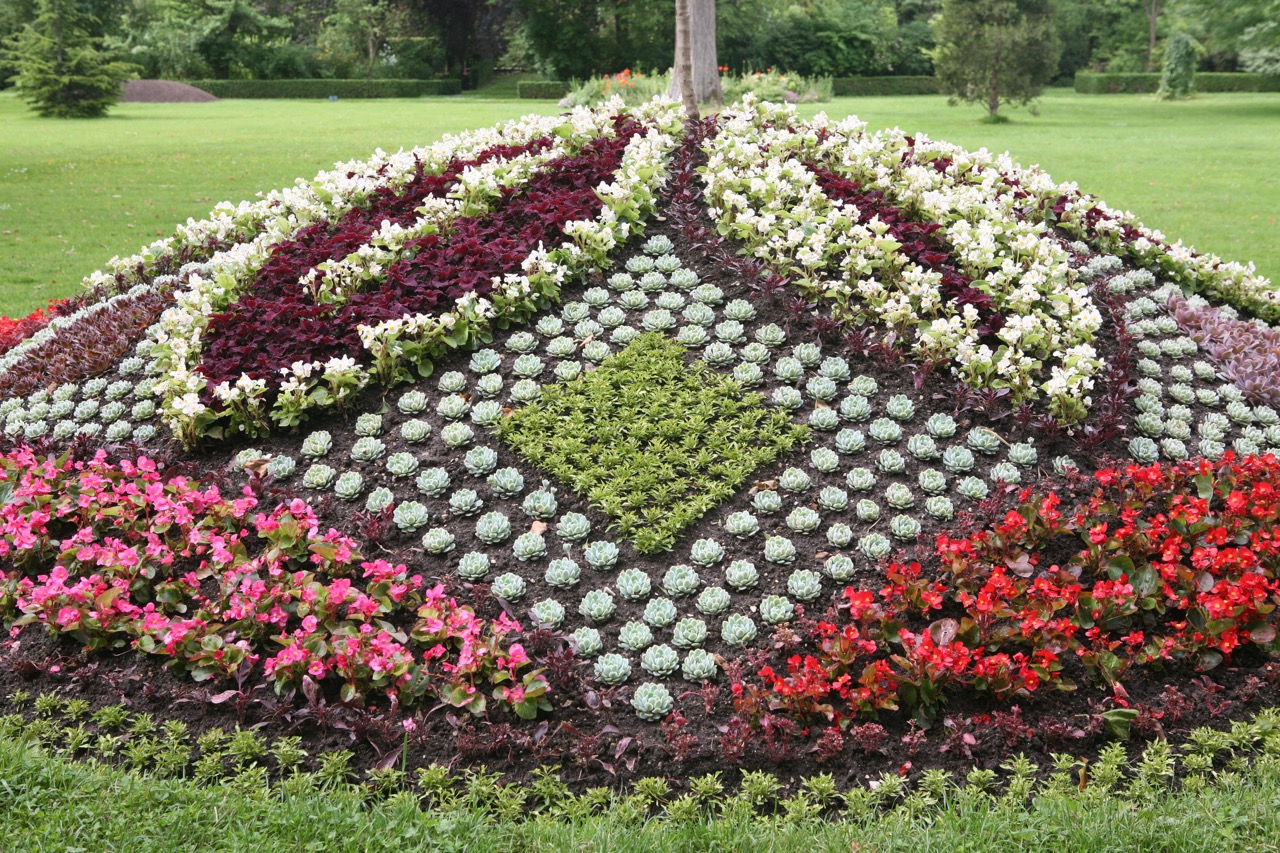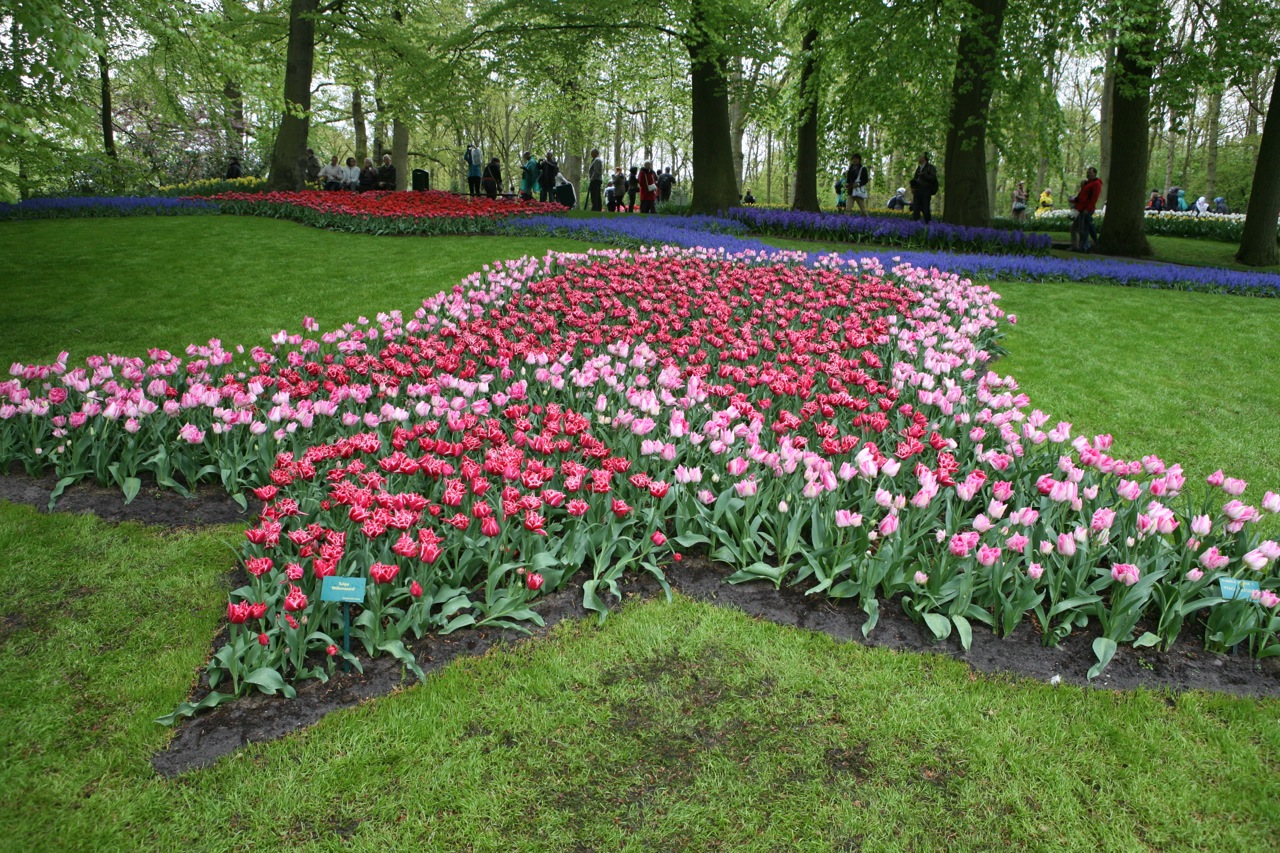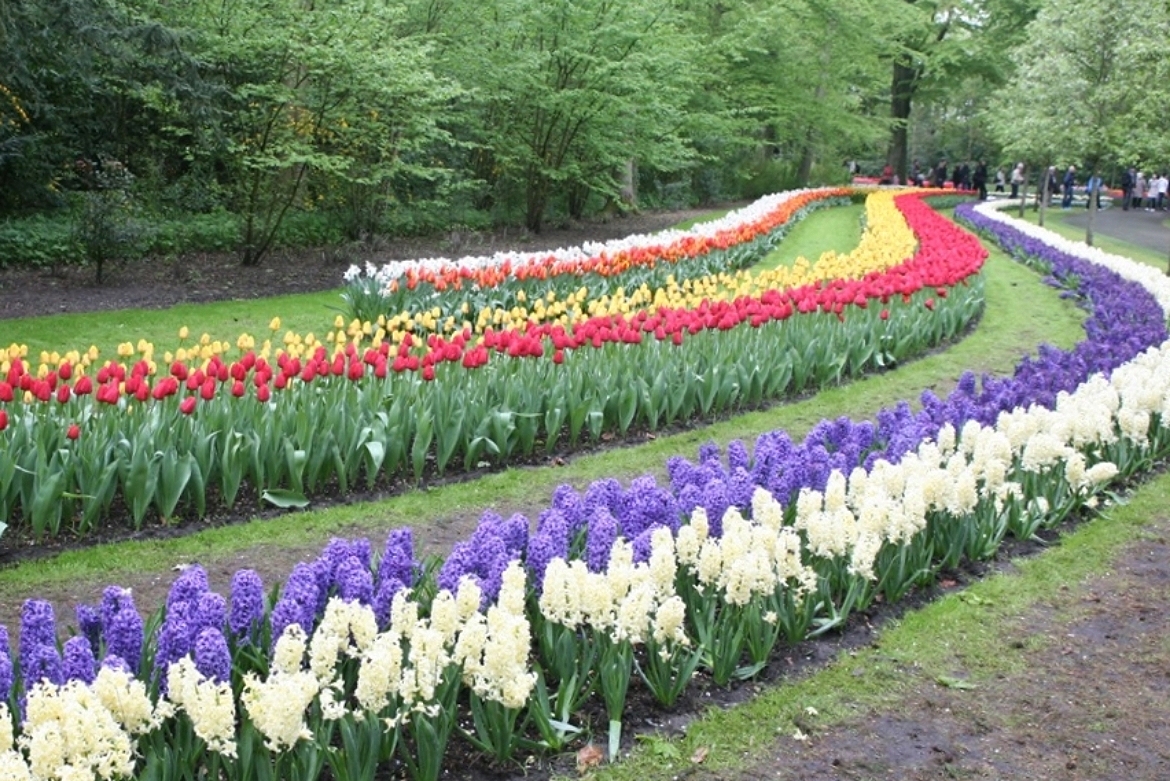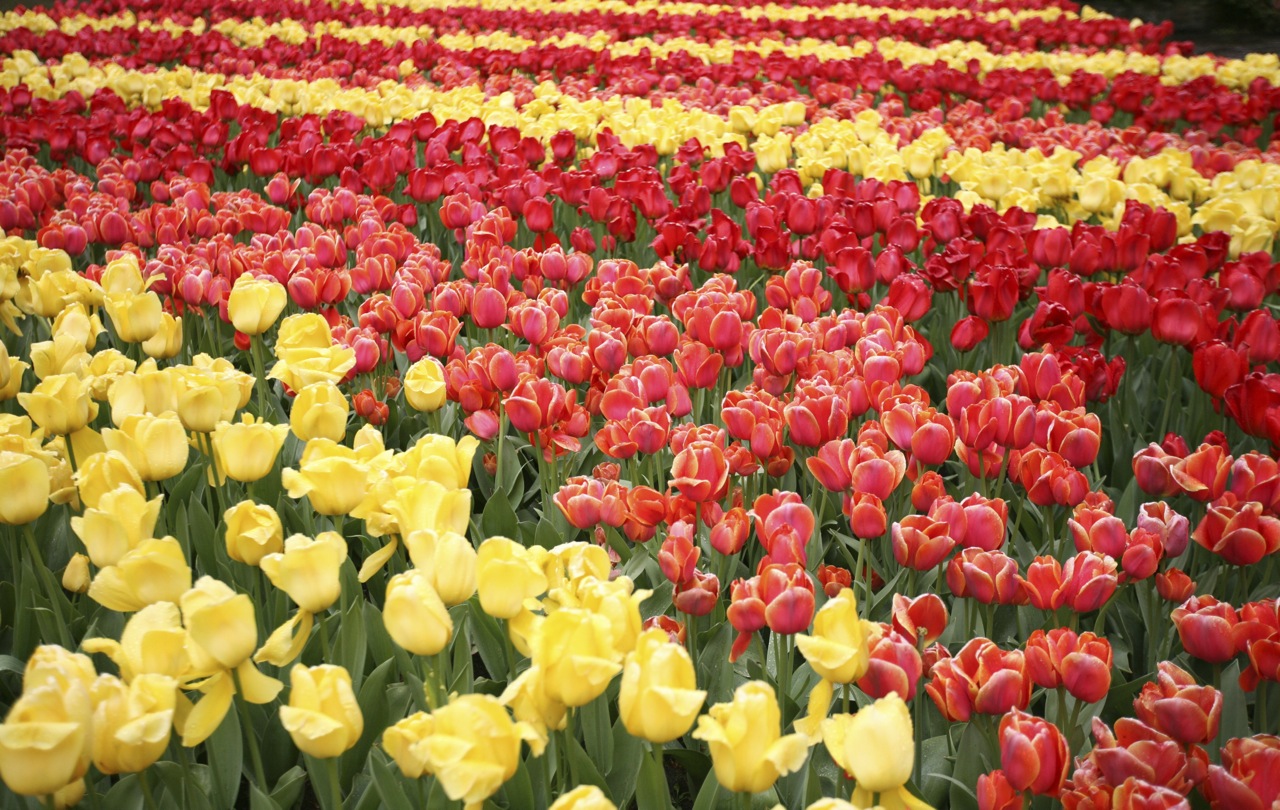"During the last twenty years Europe has been swept by a mania for sacrificing natural scenery to coarse manufactures of brilliant and gaudy decoration under the name of specimen gardening; bedding, carpet, embroidery, and ribbon gardening, or other terms suitable to the house-furnishing and millinery trades. It was a far madder contagion than the tulip-mania ... of our youth."
- Fredrick Law Olmsted, The Spoils of the Park, 1882
Gardeners as a group are a friendly bunch. However, there are a few topics that can be polarizing. Arguments about formal vs. informal, native vs. exotic, natural vs. man-made, annual vs perennial, are common.
Full copy available on books.google.com
In the 1800’s, the gardenesque style arranged exotic plant specimens to show off their full potential. In some cases this was done with a single plant or cluster; at other times brightly colored plants were combined in patterns that resembled carpets, embroidery, and stripes.
When the picturesque style had a resurgence in popularity in the 1800’s, some designers thought that these patterned plantings had gone too far.
One example can be found in the quote above. I think it’s clear where Olmsted stands on this issue.
Nonetheless, gardenesque bedding schemes remain popular. Like our attraction to shiny objects, we can hardly resist the sheer explosion of color and pattern. A few examples above from London's Hyde Park, Chateau de Versailles in France and Keukenhof in the Netherlands continue to draw large numbers of visitors.
See more gardenesque gardens here.

